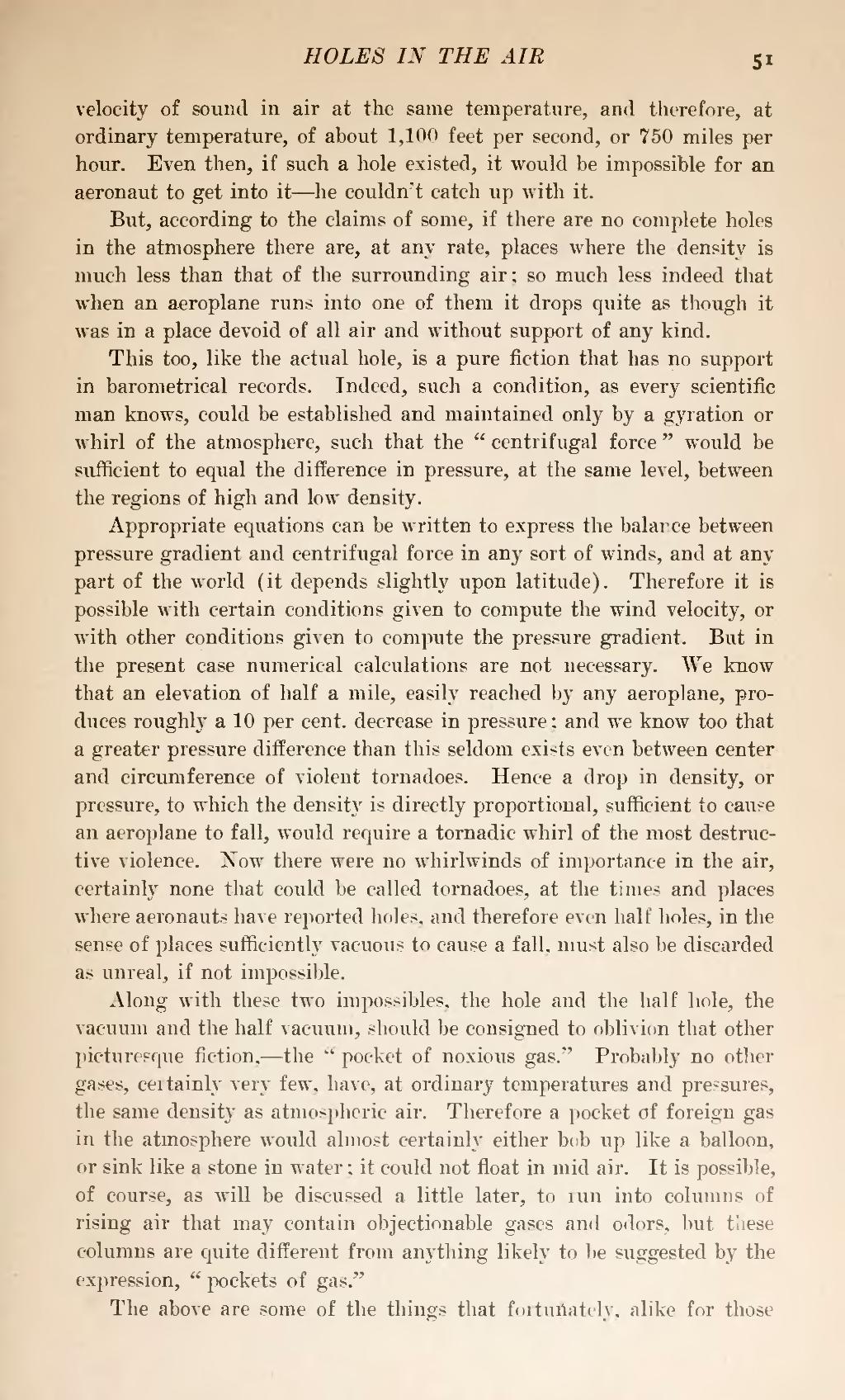velocity of sound in air at the same temperature, and therefore, at ordinary temperature, of about 1,100 feet per second, or 750 miles per hour. Even then, if such a hole existed, it would be impossible for an aeronaut to get into it—he couldn't catch up with it.
But, according to the claims of some, if there are no complete holes in the atmosphere there are, at any rate, places where the density is much less than that of the surrounding air; so much less indeed that when an aeroplane runs into one of them it drops quite as though it was in a place devoid of all air and without support of any kind.
This too, like the actual hole, is a pure fiction that has no support in barometrical records. Indeed, such a condition, as every scientific man knows, could be established and maintained only by a gyration or whirl of the atmosphere, such that the "centrifugal force" would be sufficient to equal the difference in pressure, at the same level, between the regions of high and low density.
Appropriate equations can be written to express the balance between pressure gradient and centrifugal force in any sort of winds, and at any part of the world (it depends slightly upon latitude). Therefore it is possible with certain conditions given to compute the wind velocity, or with other conditions given to compute the pressure gradient. But in the present case numerical calculations are not necessary. We know that an elevation of half a mile, easily reached by any aeroplane, produces roughly a 1 per cent, decrease in pressure; and we know too that a greater pressure difference than this seldom exists even between center and circumference of violent tornadoes. Hence a drop in density, or pressure, to which the density is directly proportional, sufficient to cause an aeroplane to fall, would require a tornadic whirl of the most destructive violence. Xow there were no whirlwinds of importance in the air, certainly none that could be called tornadoes, at the times and places where aeronauts have reported holes, and therefore even half holes, in the sense of places sufficiently vacuous to cause a fall, must also be discarded as unreal, if not impossible.
Along with these two impossibles, the hole and the half hole, the vacuum and the half vacuum, should be consigned to oblivion that other picturesque fiction,—the "pocket of noxious gas." Probably no other gases, certainly very few, have, at ordinary temperatures and pressures, the same density as atmospheric air. Therefore a pocket of foreign gas in the atmosphere would almost certainly either bob up like a balloon, or sink like a stone in water: it could not float in mid air. It is possible, of course, as will be discussed a little later, to run into columns of rising air that may contain objectionable gases and odors, but these columns are quite different from anything likely to be suggested by the expression, "pockets of gas."
The above are some of the things that fortunately, alike for those

